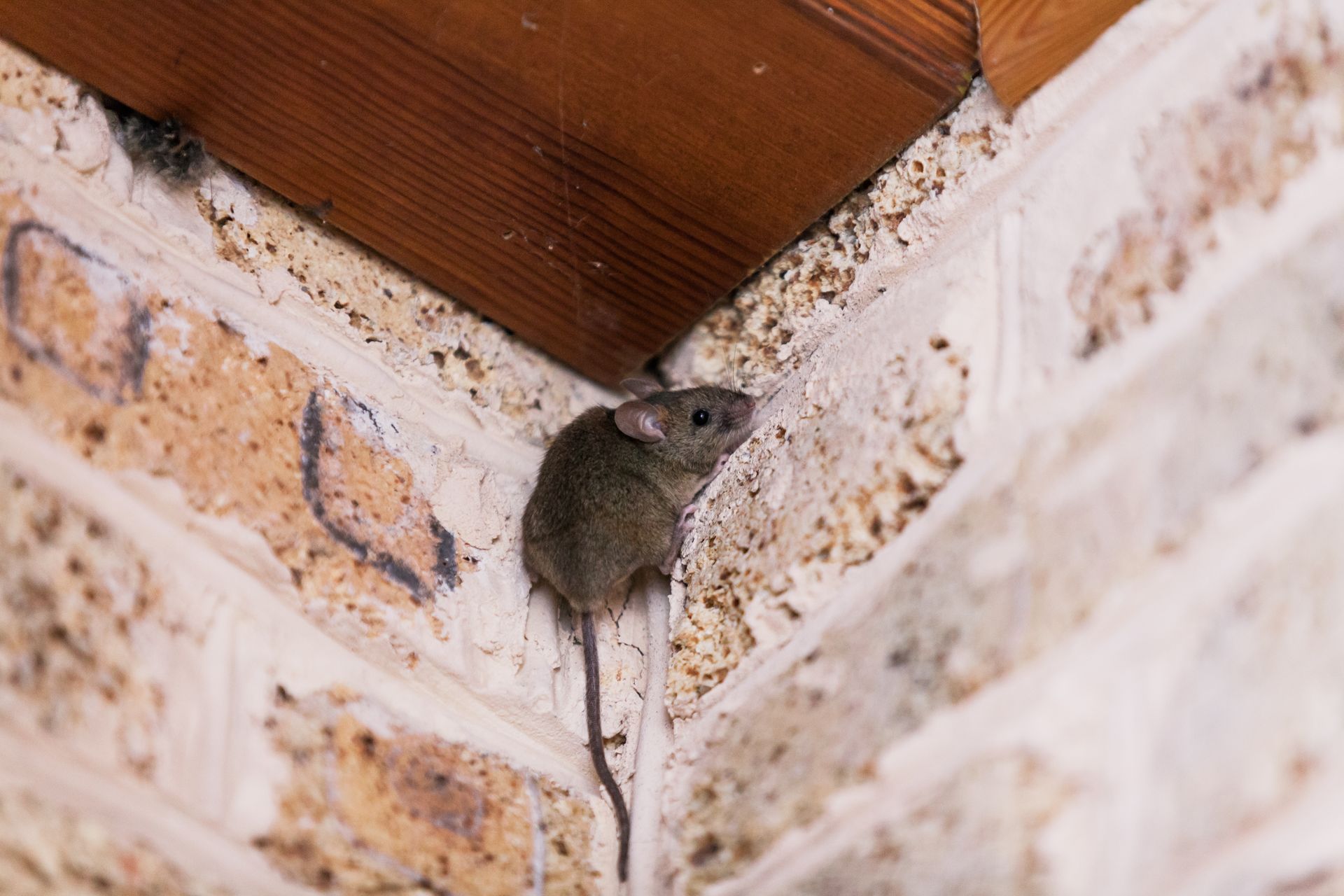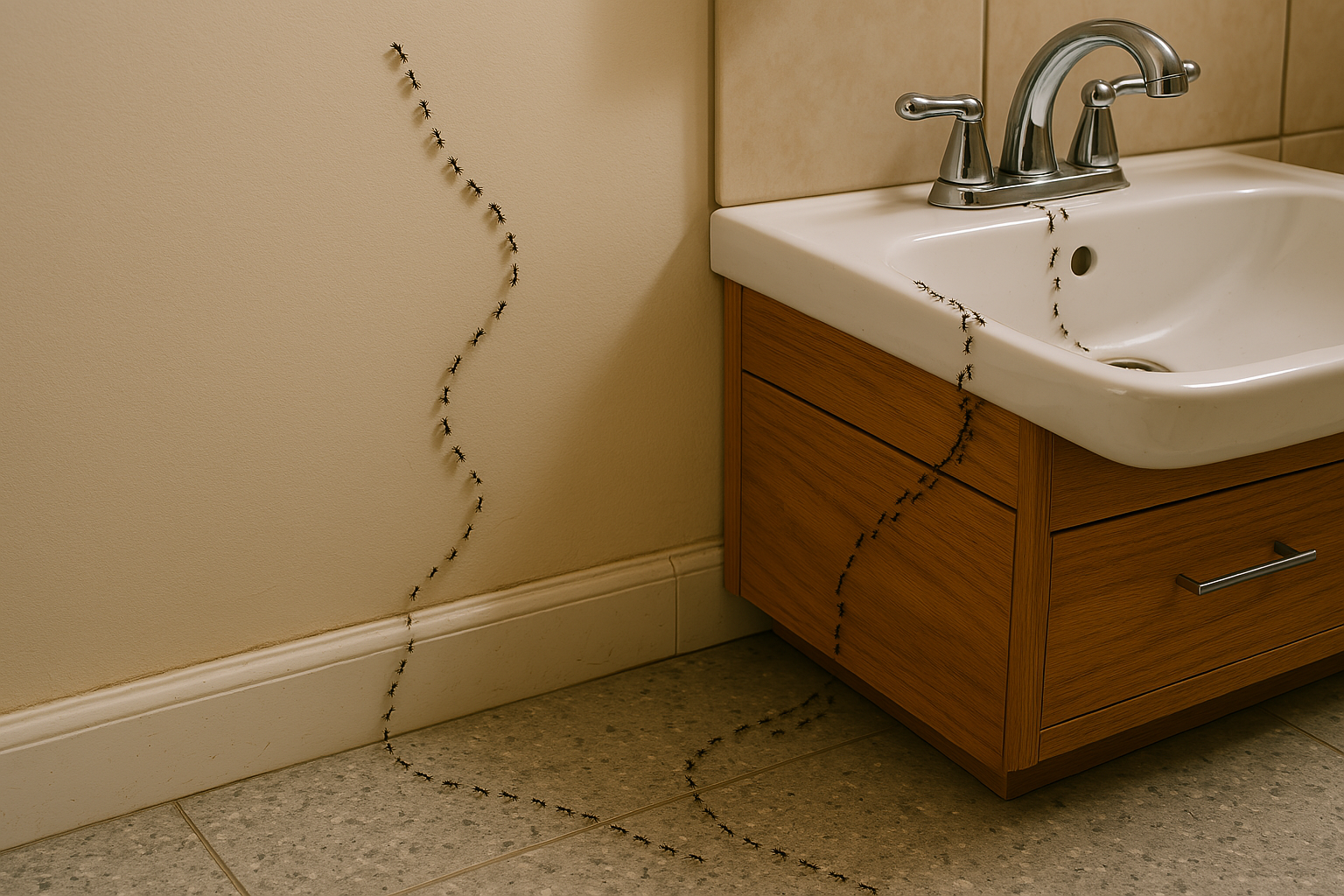Can Mice Climb Walls and Other Surfaces?

Mice are agile animals that can climb and jump to areas that most people would think are unreachable for a common house mouse. Mice are rarely limited to the ground floor because their remarkable athleticism allows them to climb up walls to access various parts of a home when ground level access points are blocked. This dexterity combined with their ongoing search for food and shelter makes mice a persistent household pest in America. In the U.S. alone, mice invade roughly 21 million homes annually. To deter these unwelcome guests, it's important to understand their behavior and take measures to eliminate entry points and things that might attract them to your home.
Can Mice Climb and Jump?
Mice are capable of climbing stairs, furniture, and even vertical surfaces to get to extremely hard-to-reach places. All it takes is a slightly rough texture like wood finishing or stucco to give mice ample grip to climb vertically. Smooth surfaces can pose challenges as there is nothing to hold on to, but they can still jump and use pipes, wires, ropes, and even climbing ivy as pathways to reach areas that would otherwise be out of reach. Mice can jump distances of up to two feet which usually gives them enough clearance to reach aeras that are often thought to be out of a mouse’s reach. Their agility is driven by hunger and the need for shelter to breed and evade predators.
How Do Mice Climb?
Mice are good climbers due to the unique form and function of their feet. Both front and back feet have soft pads that extend from each toe. These pads increase the surface area of each toe which helps provide additional grip. Each toe is also equipped with a short, sharp nail which allows them to dig into even the slightest imperfections in a surface. Combine these features with strong leg muscles and mice can easily pull themselves up once they secure their footing. Mice are also impressive jumpers that can leap heights up to 2 feet. They can use these skills to navigate what appear to be untraversable spaces. By utilizing rough walls and adjacent protruding structures, mice can ascend further than expected using a mix of climbing and jumping. Additionally, mice can also utilize their tails for balance which helps them when leaping from one surface to another.
Can Mice Climb Walls?
Mice can climb some walls, but their abilities are largely dependent on the surface texture. Rough, uneven, or porous surfaces are ideal as they allow space for a mouse’s claws to dig in and secure their footing. Smooth surfaces often present a problem though because they lack the rough texture that is needed for mice to climb. If a mouse finds themselves facing a surface that makes climbing difficult, they can also rely on their jumping skills to find a way up to their destination. While mice might not be able to climb every wall, their agility often allows them to navigate most vertical challenges without much difficulty.
What Other Surfaces Can Mice Climb?
Mice can use most textured surfaces like brick, concrete, drywall, wood paneling, and stucco to get to elevated spaces that they wouldn’t otherwise be able to reach. Each of these surfaces have tiny imperfections that are perfect for mice to sink their claws into. For example, the tiny air bubbles in concrete walls offer tiny holes for mice to climb. Similarly, stucco, wood finishes, and bricks provide enough places for mice to grip to climb up. In addition to vertical wall surfaces, mice can use objects connected to or embedded in walls to reach high spaces. Electrical cords, wiring, and even close by furniture can help mice reach high up places. Their small paws can grip tightly around such props and their tails provide balance, so they don't fall.
Can Mice Climb Stairs?
Mice can easily navigate climbing stairs. In fact, they may not need to since mice can easily jump the distance of normal stairs. The presence of handrails or banisters offers an additional climbing aid that can make it easy for mice to ascend stairs. However, it is important to understand that climbing stairs puts mice at a disadvantage as it exposes them and slows them down when they could take a faster route to get to higher floors inside of a home or building. Mice would more than likely traverse a building vertically using the internal structures hidden inside walls to stay hidden.
Can Mice Climb Trees?
Mice are fully capable of climbing trees but the danger of doing so is usually not worth the trouble. Mice tend to stay hidden low to the ground because they can easily find shelter from predators in brush and debris. By climbing trees, mice expose themselves to many of their natural predators like birds of prey and owls. They also eliminate the ability to quickly find a place to hide as they are out of their element in high up tree branches. Since trees rarely provide any additional benefit of food or shelter that mice can find on the ground, there isn’t much reason for mice to climb up trees in the first place.
What Surfaces Are Mice Not Able to Climb?
Mice will have difficulty climbing some surfaces that do not have the imperfections they need to get a decent footing. Smooth and slick materials made from plastic, metal, glazed wood, and glass typically don't provide the necessary grip for a mouse’s claws to grasp which make them a challenge to climb. For example, plastic buckets are often used in makeshift traps for mice. The smooth interior surface prevents the mice from climbing out. It’s worth noting that while mice might struggle to climb these surfaces, their strong jumping ability can sometimes overcome these barriers and allow them to escape.
Can Mice Get Inside Walls?
Mice are good at finding their way into all kinds of spaces including inside walls voids and cavities. A mouse’s ability to infiltrate a wall largely depends on what the wall is made of. Solid materials like bricks or stone will present a significant challenge for these mice to get through but hollow walls with drywall exteriors will be much easier to access. Mice are incredibly flexible which allows them to squeeze through tight spaces. A mouse can fit through holes as small as a quarter inch in diameter which is roughly the width of a pencil. They can find these spaces around pipes and vents and use them as pathways to gain access to wall cavities. These entry points can also be found in inconspicuous places like closet spaces, behind appliances, along carpeted areas, or in corners which make them hard to detect without thorough inspection. Once inside a wall void, a mouse has the perfect environment for nesting and moving around a home. The presence of structural support beams, wires, and pipes helps mice navigate within a home and insulation provides ample nesting materials. Given enough time, mice can establish nests and reproduce which can cause an infestation to expand rapidly.
Why Do I Have Mice in My Home?
Mice infestations in homes can be attributed to a combination of factors that make residential spaces attractive to mice. Homes typically offer:
- Food: Mice are opportunistic feeders. Even unnoticed crumbs or food scraps are enough to sustain them. They are normally drawn to kitchen pantries where they have access to a variety of food items. Garages are another common place to find mice as they usually have stored items like birdseed, pet food, and garbage.
- Water: Homes present plenty of water sources for mice. Kitchens, bathrooms, and laundry rooms are all places where leaky pipes might provide a source of hydration. Mice only need a couple of drops of water to rehydrate which means they can extract moisture from unexpected sources like condensation on pipes, houseplant reservoirs, or even a pet's water dish.
- Shelter: Mice are protected from predators and harsh environmental conditions when they take up residence inside your home. During summer, the cool interiors of homes provide relief from the heat, while the warmth shelters them from the cold in winter. This makes homes an ideal year-round nesting ground for mice.
Where Do Mice Hide?
Mice are more often heard than seen. Which begs the question, where do mice stay hidden? During the day, mice stay hidden in common hiding places like:
- Attics: These spaces are typically dark and filled with items like old clothes, papers, and bags, which mice can repurpose for nesting. Signs of a mouse infestation in an attic might include torn paper or fabric, used to create nesting material, and a distinct ammonia-like odor from their urine.
- Basements: Basements provide another dark and secluded environment that is rarely disturbed. Mice can generally access basements through vents, pipes, or even by navigating through the house.
- Kitchens and Utility Rooms: These areas are attractive to mice due to the availability of food. The various openings for pipework for sinks and ducts and vents for stove tops provide easy access points for mice to gain entry.
- Walls: Walls filled with insulation are appealing nesting sites for mice. The rough texture of wood and other building materials inside walls makes them easy to navigate which allows them to explore a home freely.
How to Get Rid of Mice in Your Home
Addressing a mouse infestation in your home requires a strategic approach. There are two primary methods to combat these pests:
- Barrier Methods: This involves preventing mice from entering your home in the first place. The most important step is to inspect the exterior of your home and seal off any potential entry points. Since mice can just chew through most gap fillers, it’s important to add some steel wool into the gap to create an obstacle too difficult to overcome. Don’t overlook gaps that might appear too small since mice can squeeze through tiny gaps. This method requires diligence, it's an effective way to prevent mice.
- Extermination: If you're already dealing with an infestation, offensive measures will be needed. Trapping is the most common strategy to get rid of mice. There are a variety of different traps available with those ranging from humane catch and release versions to lethal traps like snap traps and glue traps. If an infestation is out of control, it might be time to enlist the help of professional rodent exterminators.
Contact EcoGuard if You Have Mice Problems
If you're fighting a mice infestation and losing or simply want to defend your home against potential future mice, don't hesitate to seek professional assistance. EcoGuard Pest Management’s team of pest control experts is equipped with the knowledge and tools to address your concerns effectively. Timely intervention can prevent minor issues from escalating into major infestations. Trust in EcoGuard's expertise to ensure a safe, comfortable, and mouse-free environment for you and your loved ones. Contact us today and schedule an inspection of your property.

















